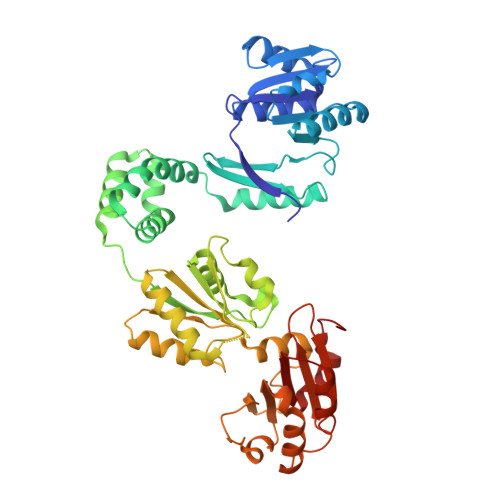Siroheme synthase orients substrates for dehydrogenase and chelatase activities in a common active site.
Pennington, J.M., Kemp, M., McGarry, L., Chen, Y., Stroupe, M.E.(2020) Nat Commun 11: 864-864
- PubMed: 32054833
- DOI: https://doi.org/10.1038/s41467-020-14722-1
- Primary Citation of Related Structures:
6P5X, 6P5Z, 6P7C, 6P7D, 6PQZ, 6PR0, 6PR1, 6PR2, 6PR3, 6PR4, 6ULU, 6VEB - PubMed Abstract:
Siroheme is the central cofactor in a conserved class of sulfite and nitrite reductases that catalyze the six-electron reduction of sulfite to sulfide and nitrite to ammonia. In Salmonella enterica serovar Typhimurium, siroheme is produced by a trifunctional enzyme, siroheme synthase (CysG). A bifunctional active site that is distinct from its methyltransferase activity catalyzes the final two steps, NAD + -dependent dehydrogenation and iron chelation. How this active site performs such different chemistries is unknown. Here, we report the structures of CysG bound to precorrin-2, the initial substrate; sirohydrochlorin, the dehydrogenation product/chelation substrate; and a cobalt-sirohydrochlorin product. We identified binding poses for all three tetrapyrroles and tested the roles of specific amino acids in both activities to give insights into how a bifunctional active site catalyzes two different chemistries and acts as an iron-specific chelatase in the final step of siroheme synthesis.
Organizational Affiliation:
Department of Biological Science and Institute of Molecular Biophysics, Florida State University, 91 Chieftan Way, Tallahassee, FL, 32306, USA.















